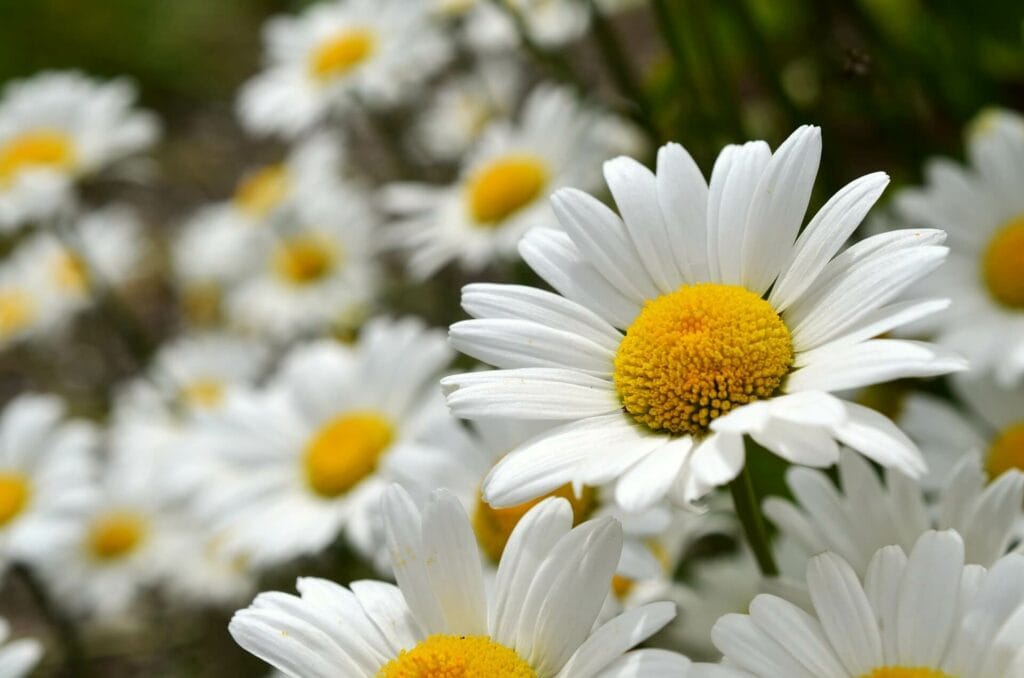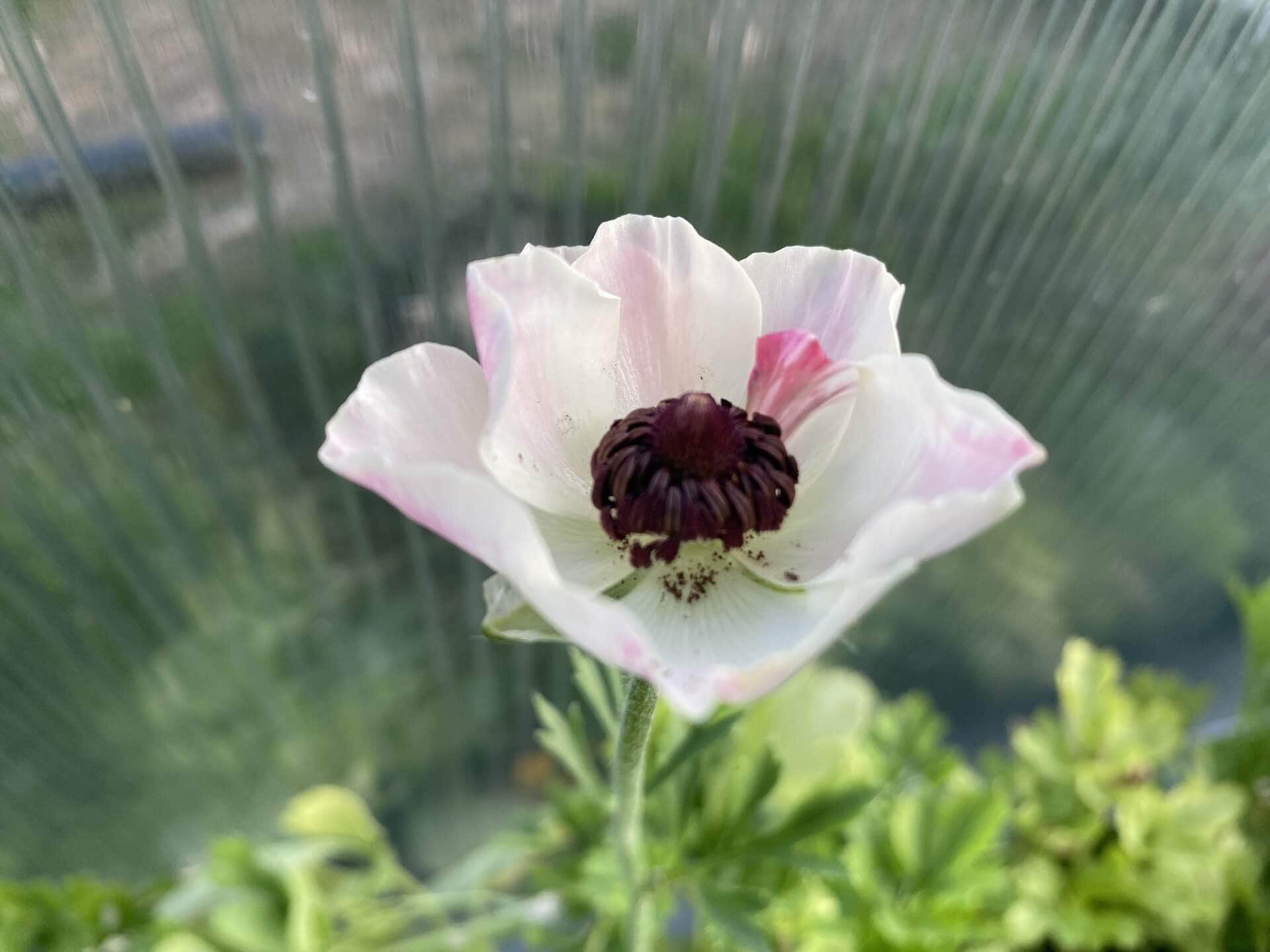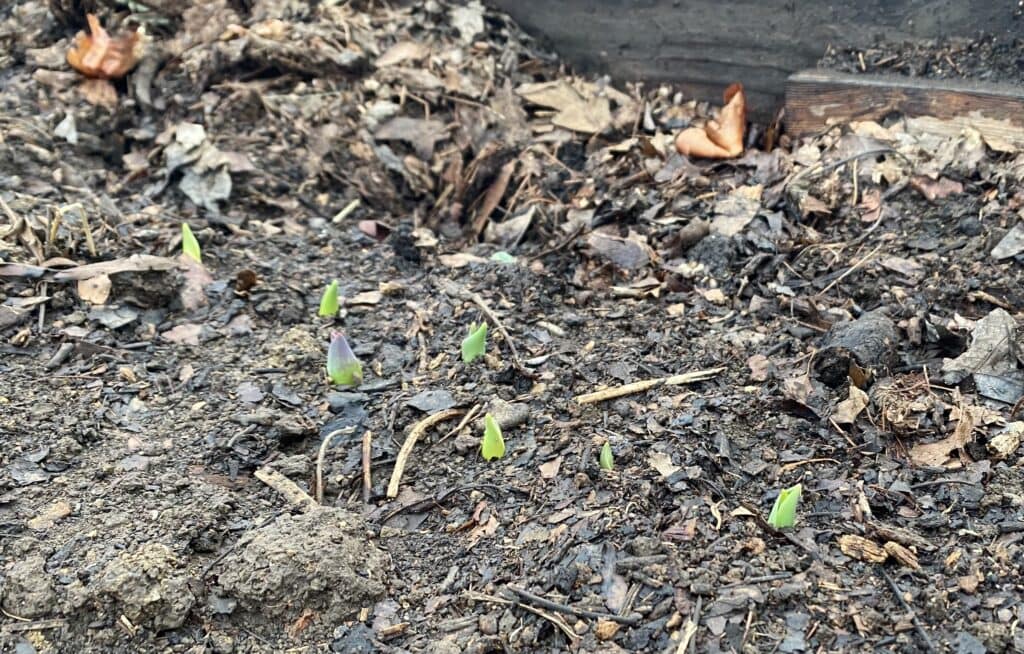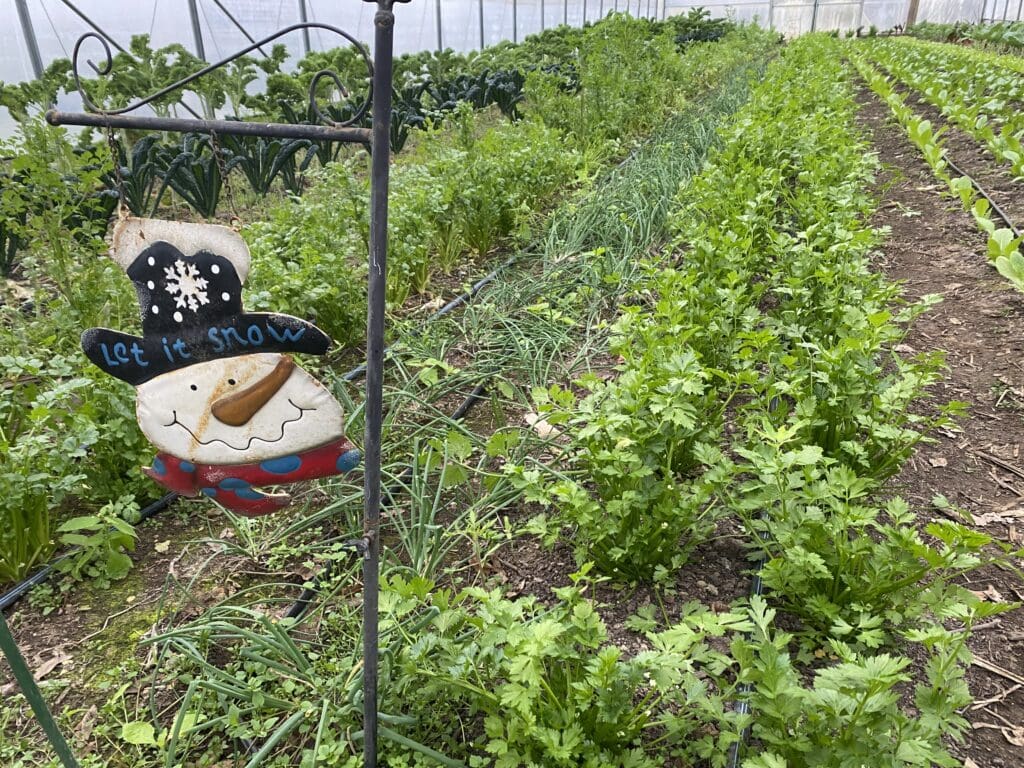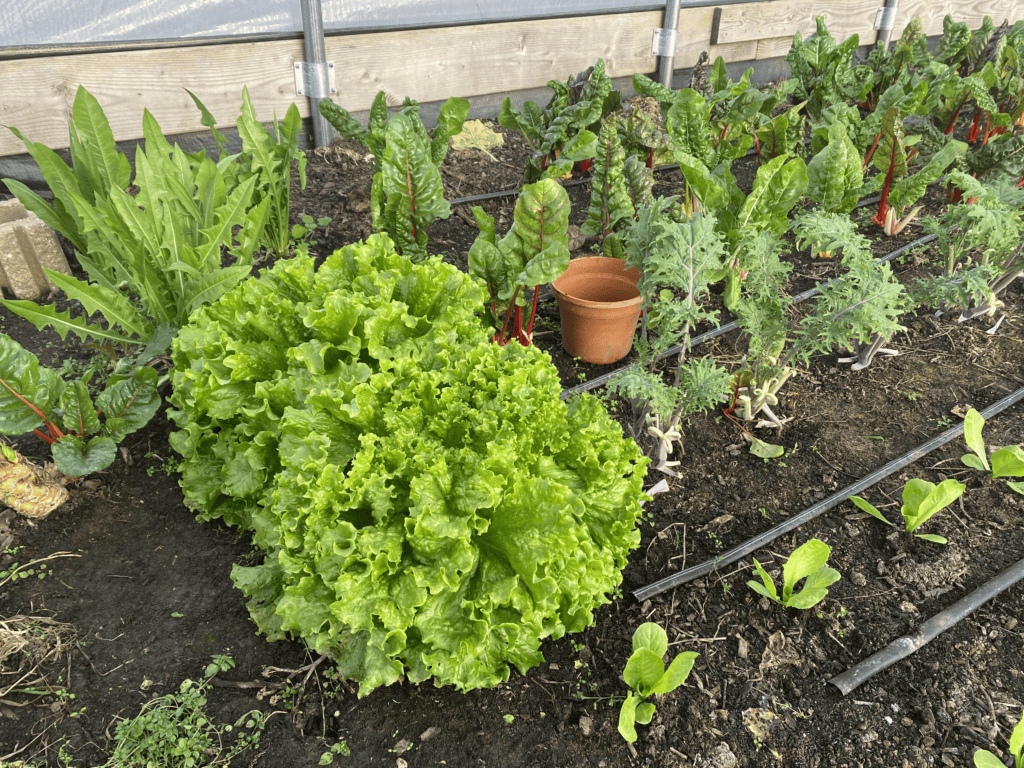This post may contain affiliate links. Probably doesn’t, but it might. It doesn’t cost you anything extra but if you use these links to buy something, we may earn a commission.
Welcome to our garden center’s 2024 collection of perennial plants, where we’re proud to showcase a diverse array of native species that are as resilient as they are beautiful. Native perennials play a crucial role in supporting local ecosystems, attracting pollinators, and creating sustainable landscapes that thrive year after year.
In this blog, we’ll introduce you to some of the standout native perennials we’re offering this year, along with tips on how to care for them and incorporate them into your own garden. Join us on a journey through the beauty and benefits of native plants, and discover why they’re the perfect choice for creating a vibrant, environmentally friendly garden that will flourish for years to come.
Table of Contents
Plan your perennial garden with the plant grower
As you head into your garden and plan out which plants you want where, remember our Garden Center and the variety of plants we have for you. We know the soil and weather for this area, and we know what grows easily and well and what does not. We select perennials that are suited for our growing area here in northern Delaware, and we always have an eye out for the deer-resistant plants. Unfortunately, deer can be persistent, but at least we can stay away from their favorites.
Native perennials are always desirable for their hardiness, beautiful flowers, and reliability. We have selected varieties that have longer bloom periods so that your garden can be as colorful as long as possible.
A couple of planting tips for your perennials
Always allow room for your plants to grow, both this year and next. You gain the most flowers and have the healthiest plant when the plant has room for roots and foliage.
How much sun or shade matters a lot. Shade-loving plants can sunburn with too much sun and sun-loving plants won’t produce flowers in the shade. Be sure to check your planting location!
So settle in, and peruse the selections. Remember, more plants show up every week. Bring your questions and come talk flowers with us!
Aster laevis ‘Purple Dome’
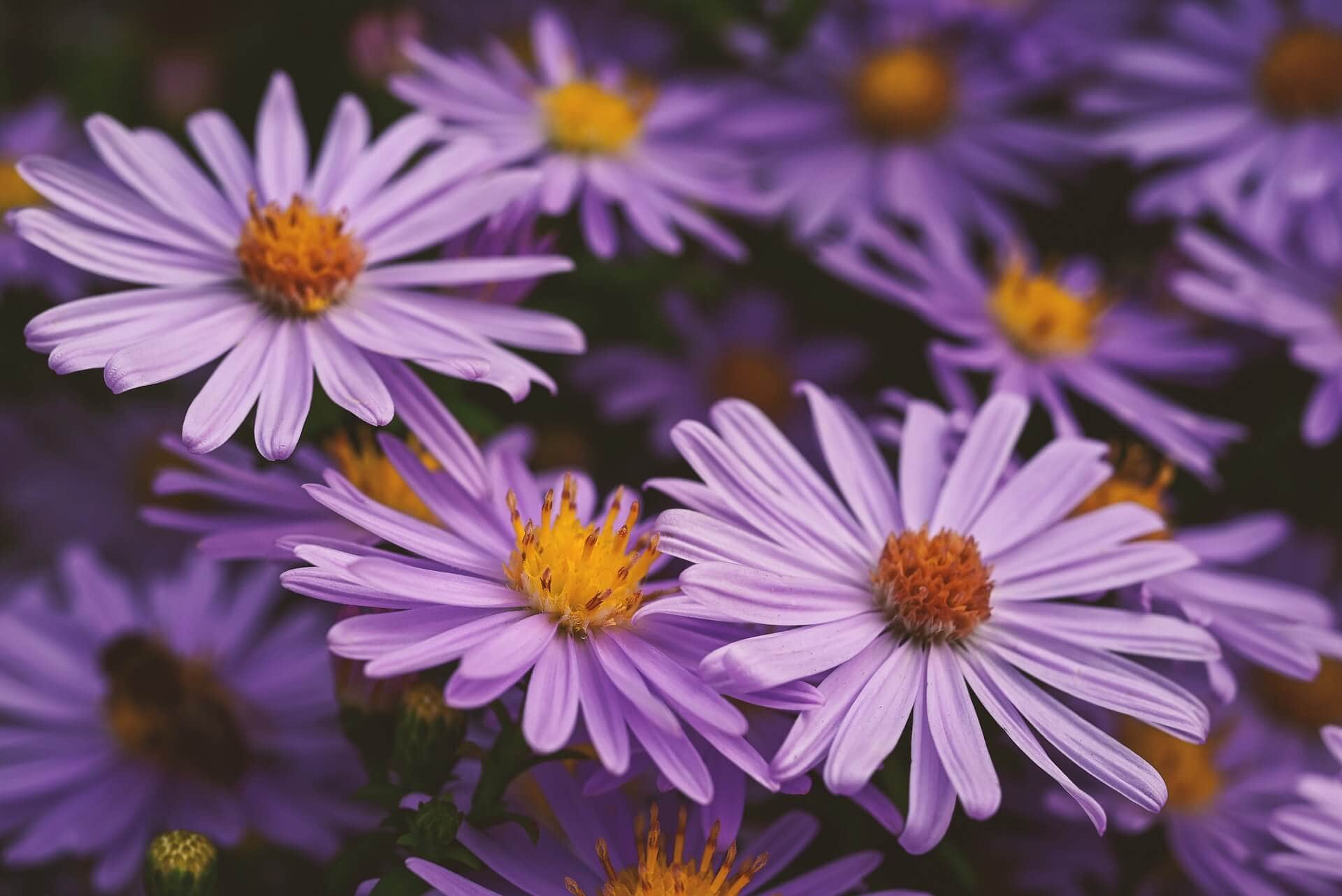
There are lots of aster varieties! Each has its own charm and characteristics: height, bloom time, color (variations from dark purple/blue to magenta pink), and sun/shade preferences. Very reliable and dependable. ‘Woods Blue’ has a low, rounded habit and thrives in half-shade to sunny areas. This variety has profuse blooms on a compact habit, about 12 inches high. The blue flowers have a bright gold center, and this variety has a longer bloom period than many varieties. ‘Purple Dome’ has darker flowers that are purple. Both are reliably hardy asters that are pollinator-friendly and deer resistant.
Astilbe spp., Astilbe ‘Erika’: Flexible in its sun requirements, Astilbe can be grown in full shade, half-shade, or even full sun. Our experience has been that the hot temperatures in the summer can overwhelm Astilbe and sunburn the leaves. In full shade, these plants will continue to bloom but the plants will not be as large. Half and half will give you the largest and most prolific blooms. The feathery plumes are a delight in shady corners of the garden. Each variety blooms at a slightly different time, with bloom time ranging from mid-spring to late summer. Astilbe multiplies slowly, so division every 4-5 years is sufficient to keep the plantings under control. Regular watering, particularly in the summer, helps the plants do well. ‘Erika’ has profuse light pink plumes.
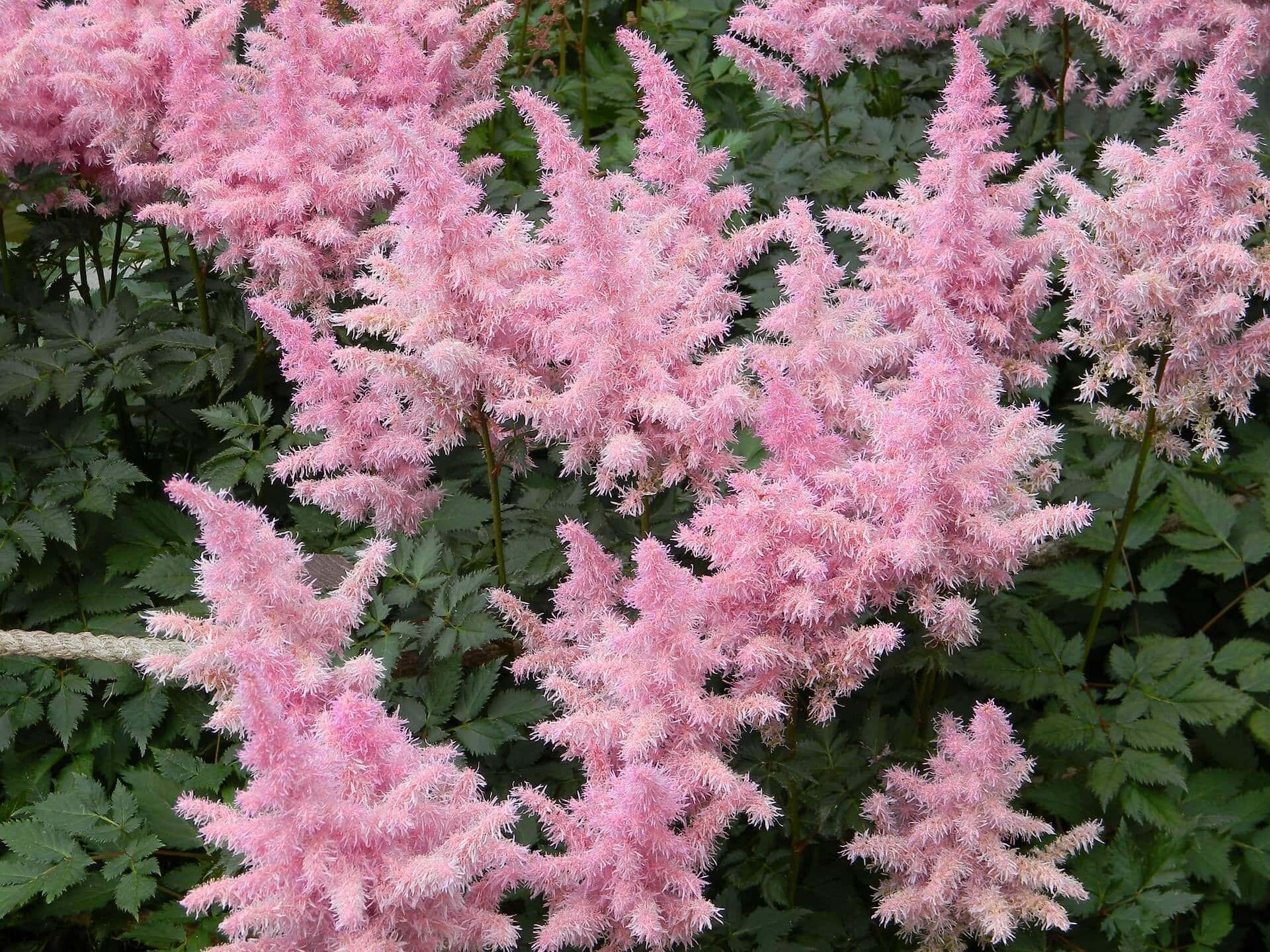
Dianthus carophyllus also known as Carnation, ‘Grenadin’: This is a wonderful hardy perennial for zones 4-10, which puts us right in the middles. The 2” flowers have a lovely clove fragrance and will hold up exceptionally well in cut flower bouquets. Red, pink, white, and yellow flowers will bloom in June and July. This is a sun loving and heat tolerant plant, so be sure to plant it where it gets the maximum amount of daylight hours.
Coreopsis ‘Double the Sun’
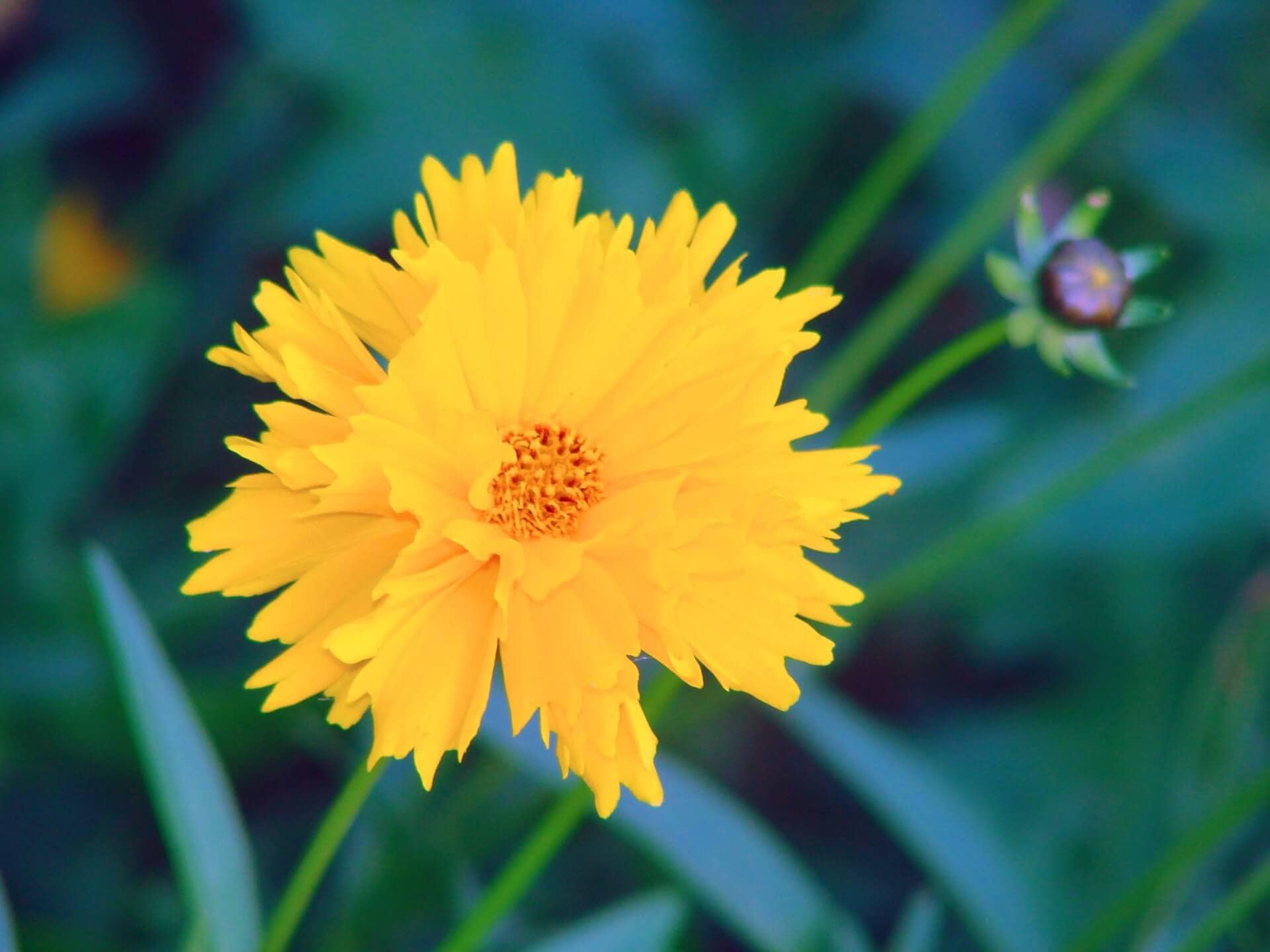
Coreopsis is one of the longer-blooming perennials, showing off brilliant daisy-like yellow flowers nearly all summer. This variety is a double, with an extra layer of petals to make a very showy display in the garden. A sun lover, Double the Sun remains a compact size at 12-14 inches height and width.
Dicentra ‘Spectabilis’
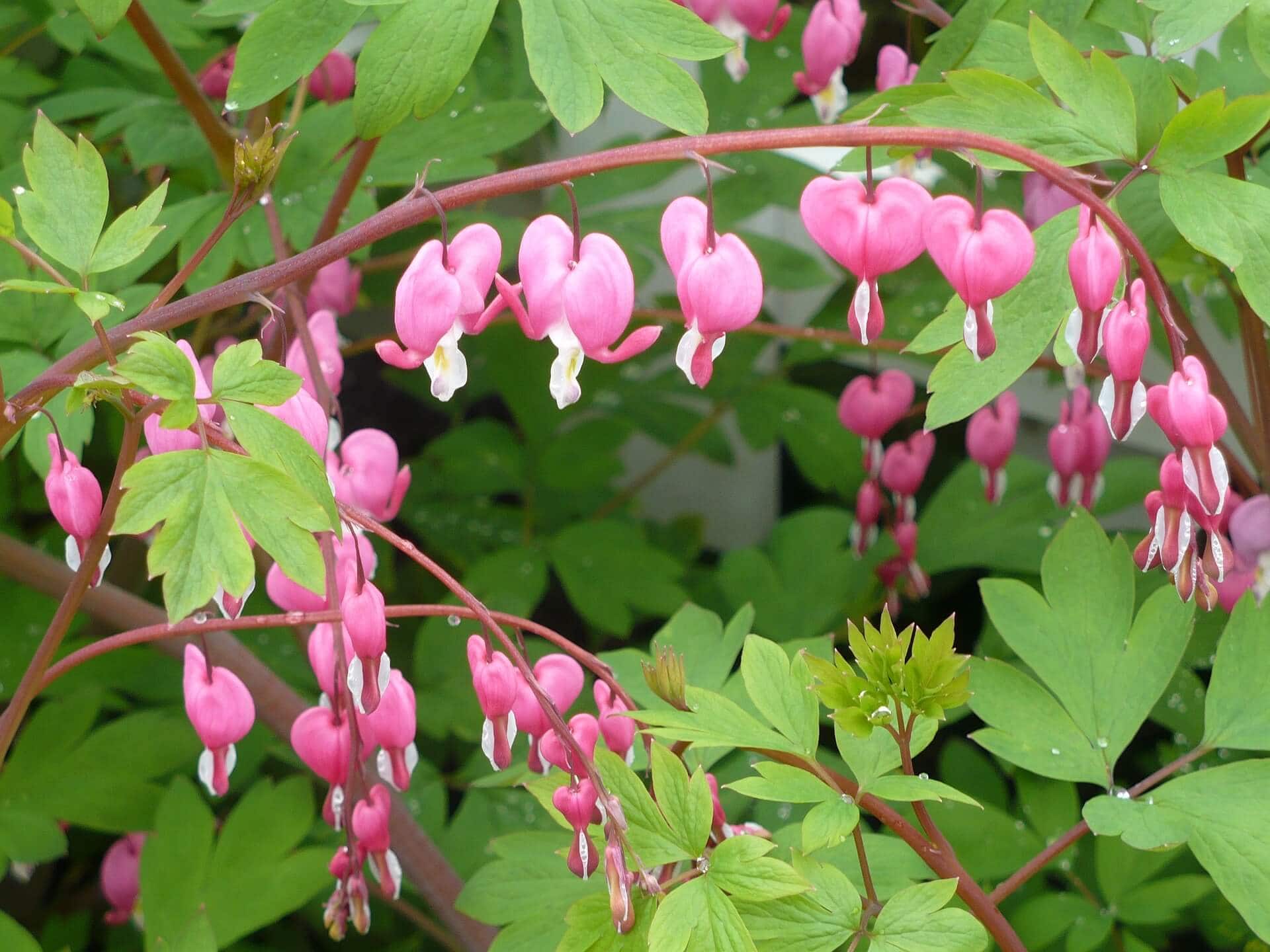
This perennial is very reliable and grows well in full sun to half-shade to nearly full-shade. Your plants that get half-day sun will be larger in both height and width than the ones in full shade. Plants in full sun will bloom sooner, but will also go into dormancy in the summer. Profuse flowers can also be cut for bouquets. This perennial blooms in late spring, so we are always thrilled to see the graceful flowers. Also known as “Bleeding Heart.”
Echinacea
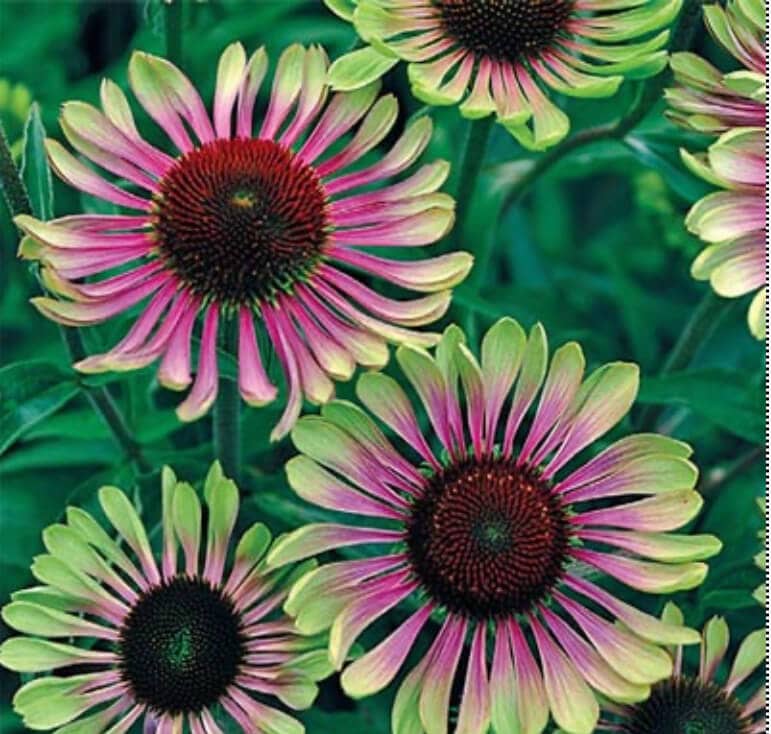
There are many different coneflower varieties! ‘Magnus’ has large reddish-pink cone flowers with deep orange centers. Echinacea is a butterfly magnet, and these varieties are easy to grow. They withstand drought, humidity, and harsh winter weather. This native perennial does not need dead heading. Once the flowers are done, the central mound produces seeds, providing food for goldfinches and other birds. Full sun is best for all echinacea varieties. Also known as “Cone Flower.”
Heuchera ‘Green Spice’
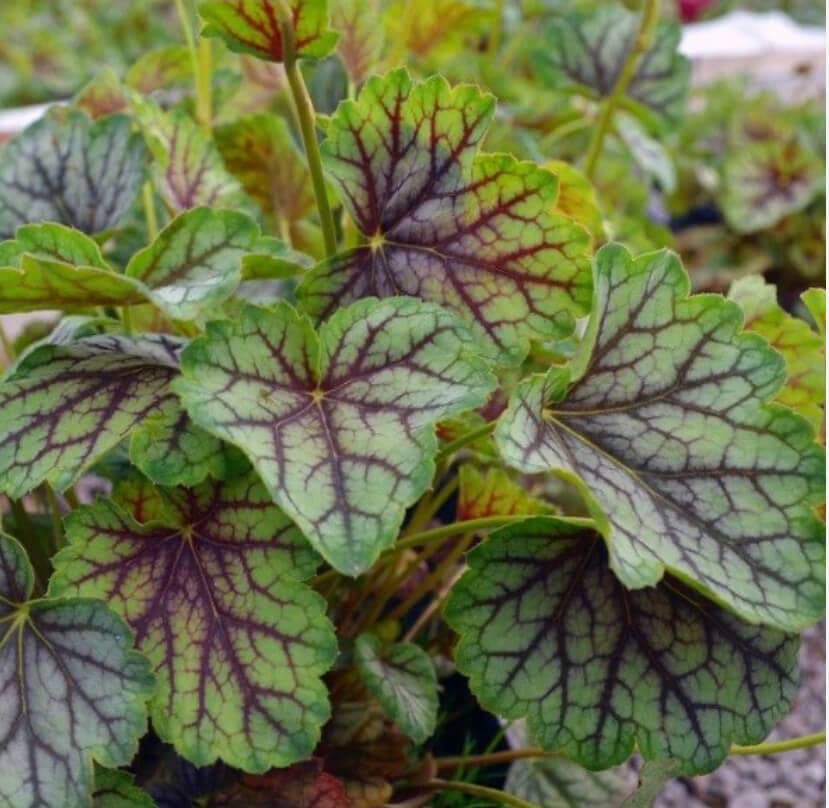
Bright green leaves with dark red veins make this perennial stand out in the shade. It has these beautiful leaves as well as delicate spikes of pink flowers. The flower spikes hold up well in cut flower arrangements. ‘Plum Pudding’ is fast growing, will flower the first year, and has a tidy, mounding habit. This variety is more heat and humidity tolerant than others and thrives in full-shade to half-shade areas. Also known as “Coral Bells.”
Heuchera, ‘Plum Pudding’: Dark purple leaves with silver marbling makes this perennial stand out in the shade. It has beautiful leaves as well as delicate spikes of pink flowers. The flower spikes hold up well in cut flower arrangements. ‘Plum Pudding’ is fast growing, will flower the first year, and has a tidy, mounding habit. This variety is more heat and humidity tolerant than others and thrives in full-shade to half-shade areas.
Hydrangea ‘Game changer Pink’, ‘Gamer Changer Blue’
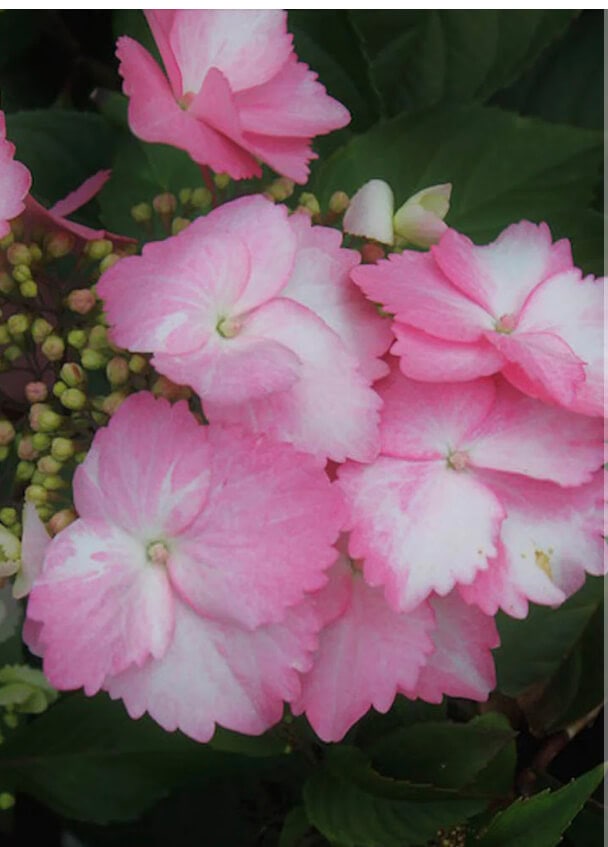
Hydrangea is a spectacular bush with large flowers that bloom for many weeks in the summer. The name comes from the Greek word for water, referring to the plant’s need for consistent watering. If you maintain an acidic pH level below 7, your plant will produce blue flowers. An alkaline level pH above 7.5 will produce pink flowers. If your soil is right at the neutral 7.0-7.5 level, then your plant can produce blue and pink flowers at the same time. In many cultures, hydrangeas are a symbol of gratitude, and are often given as gifts to express appreciation. This variety has been developed to bloom both earlier in the season and longer in the season than most other varieties.
Lavandula Lavender: There are many varieties of lavender, but we have selected two varieties that can tolerate our hot, humid summers and survive our unpredictable winters: ‘Phenomenal’ and ‘Sensational.’ These are crosses between English and Spanish lavender parents. The leaves are very fragrant; zones 5-8 for these disease-resistant and hardy crosses. French lavender (zones 7-10) blooms nearly continuously all summer. English lavender produces the classic tight purple spikes and is hardy for zones 5-8. Spanish lavender is suited for hot, steamy climates, zones 8-10. ‘Phenomenal’ and ‘Sensational’ have long bloom periods, very fragrant flowers, and they are well suited to our hot summers.
Leucanthemum ‘Betsy’ ‘Real Charmer’
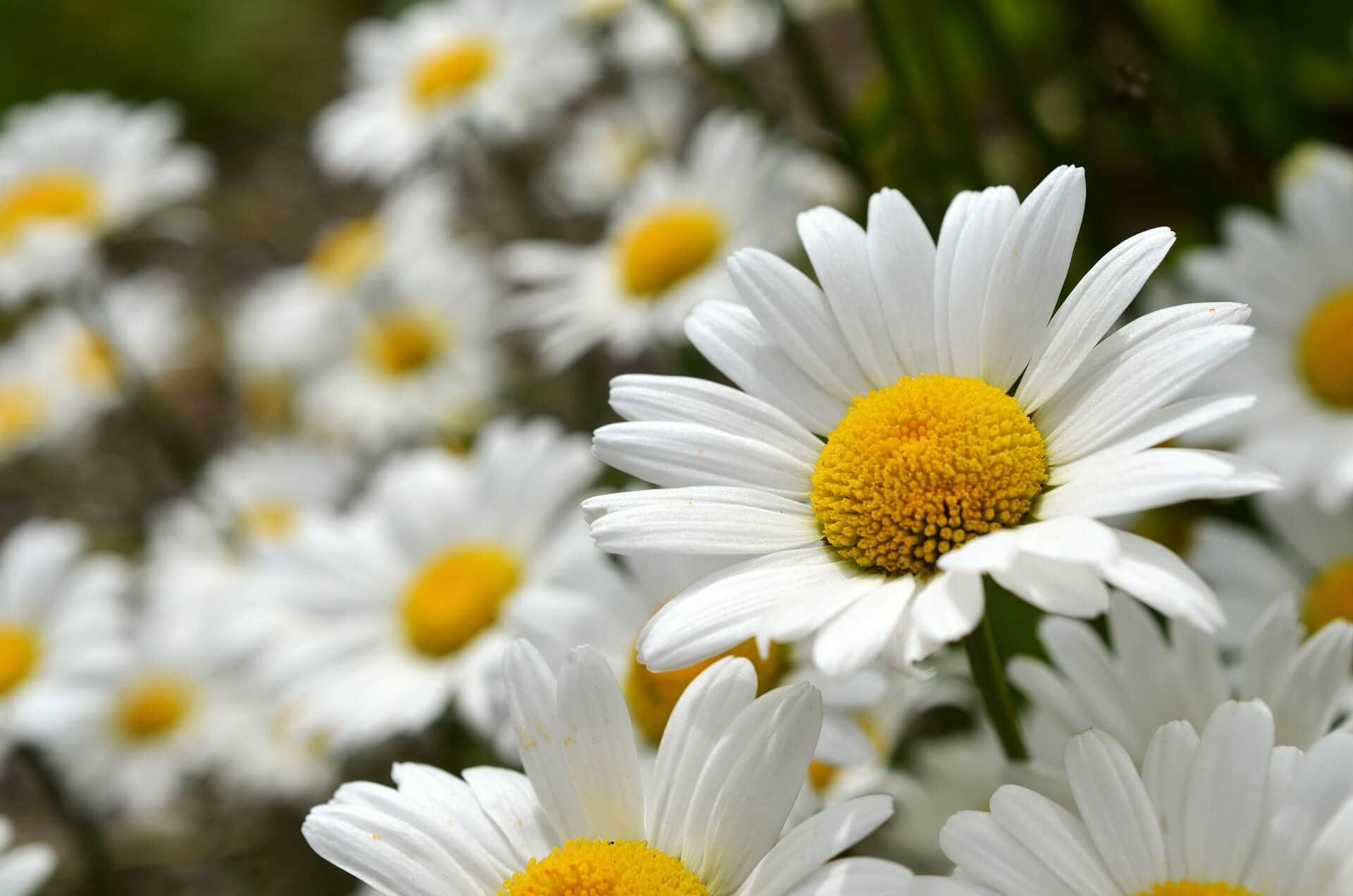
This is a long-lived perennial which produces masses of single white flowers. The bright gold center makes for an attractive flower in bouquets. The bloom time can last from early June through late July. Cut frequently to prolong the bloom period. Hardy in zones 5-9, Shastas grow best in full sun and well-drained soil. You may be able to get a second round of flowers by cutting the plant back when the blooms are done. Very popular with pollinators. Also known as Shasta daisies
Monarda didyma ‘Jacob Cline,’ also known as Bee Balm: There are about 15 different types of Monarda and all are loved by bees, hummingbirds, and other pollinators. These varieties are hardy in zones 4-9. Monarda didyma is easily grown in full sun to partial shade. ‘Jacob Cline’ is the didyma variety most often grown due to its resistance to powdery mildew. The bright red flowers pop in the garden landscape.
Phlox paniculata ‘Emerald Blue’ ‘Blue Moon’ ‘May Breeze’ (white) also called Garden Phlox
Phlox subulata also called Creeping Phlox
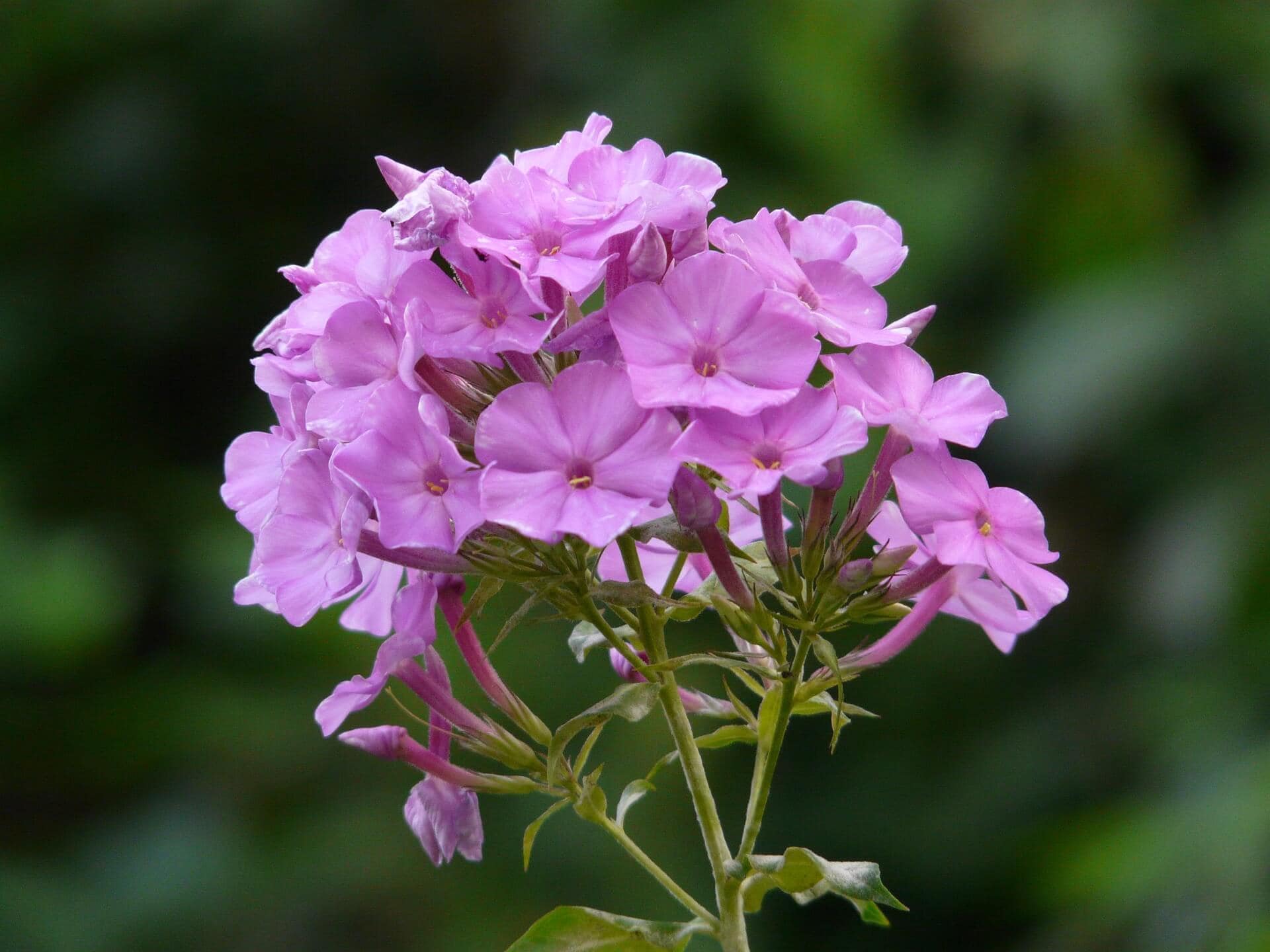
Not to be confused with Creeping Phlox, the groundcover variety, Garden Phlox can grow from 18-36 inches tall. These varieties are mildew resistant, an important feature for our area. Phlox are beautiful in cut flower bouquets and bloom from July into September. The flowers can be blue, pink, or white.
Creeping Phlox is a beautiful early flowering ground cover which spreads easily and fills awkward spaces such as hillsides or steep banks. It is not favored by deer or rabbits for nibbling! A big reason why we love native perennials. We are happy to have three different varieties of Creeping Phlox this year.
Sedum ‘Dazzleberry’ and Sedum ternatum, Stonecrop ‘Lime Zinger’:
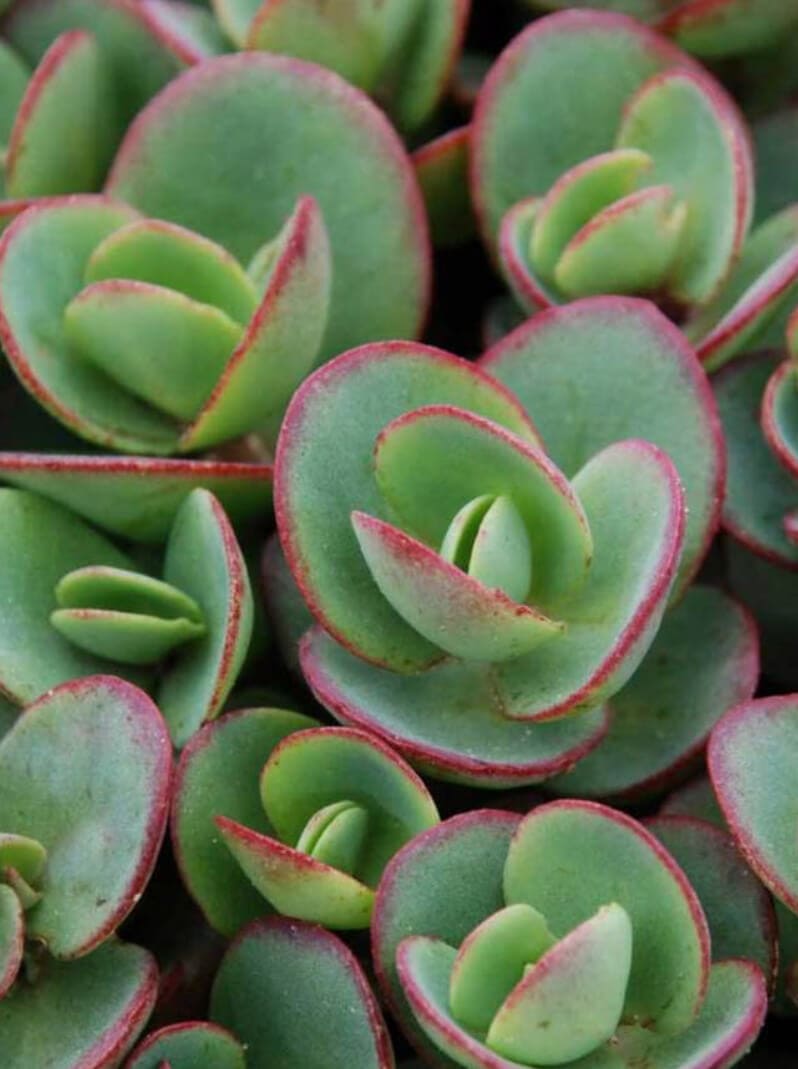
These are a great variety of sedums, from low growing to upright, with different colored leaves, and leaf sizes. They look like members of the cactus family, but can be hardy perennials in zones 3-10, depending on the variety. The variety, Lime Zinger, has bright green leaves edged with red, as well as hot pink flower heads in the late summer/early fall. Sedum are very heat, sun, and drought tolerant, and are perfect for areas where you do not have easy water access. Although the leaves of sedum are usually the star attraction, ‘Lime Zinger’ produces a beautiful pink flower cluster for several weeks in the late summer. Some varieties are also called “Hens and Chicks.”
General planting tips
Water immediately after planting and then weekly. Watering helps prevent transplant shock, particularly on sunny or warm days.
Provide a general fertilizer or side dressing of compost each year.
Use mulch, dried leaves, or other natural materials to help suppress weeds until the plants grow up. Weeds take away nutrients and water that your young plants need. Mulch will help keep the soil cool and retain water.
What if my perennial goes dormant early?
In an extra hot summer, your perennials may go dormant early. Do not panic! It may look like the plant has died, but this is the plant’s way of surviving. Simply continue to water throughout the rest of the season. Leave the leaves for as long as possible. There is an excellent chance of seeing your plant again the next growing season.
Conclusion
In conclusion, choosing native perennials for your garden not only enhances its beauty but also contributes to the health of your local ecosystem. By selecting plants that are well-suited to your region’s climate and soil conditions, you can create a garden that thrives with minimal maintenance and supports a diverse range of pollinators.
Additionally, purchasing plants directly from the farmer who grows them ensures that you’re getting high-quality, locally grown specimens that are acclimated to your area. So, whether you’re a seasoned gardener or just starting out, consider adding native perennials to your garden this year and enjoy the beauty and benefits they bring.
If you are close to Wilmington, Delaware, come visit! We love to talk about plants and explore the ways that plants can be used in gardens. If not, please find a farmer near you who is growing plants just for you. Thank you for your part in making the world beautiful.
Happy growing!
~ Ruth
Additional resources
https://www.mountsinai.org/health-library/herb/echinacea
https://facts.net/nature/plants/12-astounding-facts-about-bee-balm/
